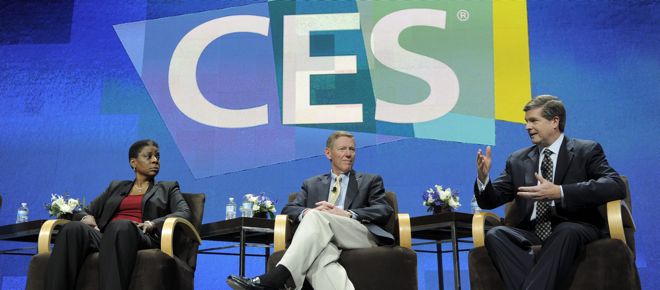Why the CES still matters
… because no one should buy new technologies sight unseen
Share

With the Consumer Electronics Show wrapping up for another year, it’s time to reflect back on the mega techno circus and try to decipher what all the hubbub was about. Before the show began, the Associated Press wrote that CES has a poor track record. In assessing how recent shows had done, the story concluded that the annual event was becoming a big dud factory. After all, netbooks, 3D television and a swarm of tablets introduced over the past few years mostly didn’t make it to market or made a resounding thud if they did.
From one perspective, this is true–CES does produce its share of technologies that fail to catch on. However, for the most part, the AP story missed the point. For one, it glossed over some obvious facts, such as that 3D has basically become a standard feature of flat-panel TVs. I remember doing radio interviews at the 2010 CES show, where such sets were first unveiled, and saying exactly that this would happen–3D would eventually become just another TV viewing option, like gaming or vivid mode.
The story also mentioned “smart” TVs, which were also introduced at previous CES events. Far from being duds, such sets are fast becoming the norm, with about half of all TVs to be shipped this year expected to have Internet connectivity and features. In other words, the show may produce some high-profile failures, but it also kickstarts a lot of gadgets and features that quietly catch on.
More to the point, there are many technologies on display at CES that are perhaps not quite ready for the big time, and don’t get a lot of attention from the mainstream media. They are usually the product of smaller companies or entrepreneurs who are hoping to sell their wares to some of the bigger names in attendance. For all its flash and glitz, CES is, after all, a trade show where business deals are made. Some of them eventually lead to the stuff that makes big headlines.
In part, the CES’s glamour may have dimmed because the pace of technological progress has been speeding up. (The phenomenon starts with Moore’s Law, or the notion that computing processing power doubles every 18 to 24 months, and continues into what futurist Ray Kurzweil calls the Law of Accelerating Returns, which basically applies Moore’s tenet to all information technologies.) In the past, the show was an annual launching pad for grand new technologies. Things like the VCR, CD player and DVDs were first introduced there. Now, with the increasing rate of development, it’s understandable that companies and entrepreneurs are not going to save their big new inventions for the once-a-year event. There’s just too many of them.
While some media like to pooh-pooh trade shows, and the CES in particular, because they are such a big and exhausting event, they may in fact be more relevant than ever. With so many new technologies popping up every day, it’s increasingly important to put them all in one place so they can be juxtaposed, examined and assessed against each other. From a scientific perspective, CES is becoming a giant test lab, while on a business level, it’s looking more like a shopping mall where companies go to see stuff that might appeal in the future.
As anyone who has ever bought something online can attest to, there are certain items–shoes, for example, or a bed–that one should never purchase sight unseen. That’s the case with new technologies, which is why CES is likely to remain relevant despite the ever faster pace of technological innovation.